Sim | 820899 Studio 10
like
Part 1 100mm 50mm 25mm 0
Sidney
be here,
everyday
Initial Research
- Introduction to Lifta: RIWAQ
- Initial Understanding of Lifta
a) Location of Lifta
b) Pressing Matters of Lifta
c) Access to Lifta
d) Lifta’s Present Day Significance
- Identifying key communities involved in Saving Lifta
a) Save Lifta Coalition
b) Zochrot
c) Israeli Palestinian Bereaved Families for Peace
- Significance of Walking Tour in Lifta
Intermediate Research
- Understanding Resistance in Lifta
a) What Saving Lifta is Truly About
b) The Disillusioned Israeli
c) Everyday Resistance
- Program
Sketch Design Research
- Potential Site Options
- Key Conceptual Themes
a) Parallel Narratives
b) Encrypted Resistance
Design Proposal
- Sketches
- Palestinian Coffee House Precedence
- Material Studies
a) Stone
b) Terracota Tile
Resolved Design Proposal
- Thesis Statement
- Final Drawings
Evolution of Thesis Statement
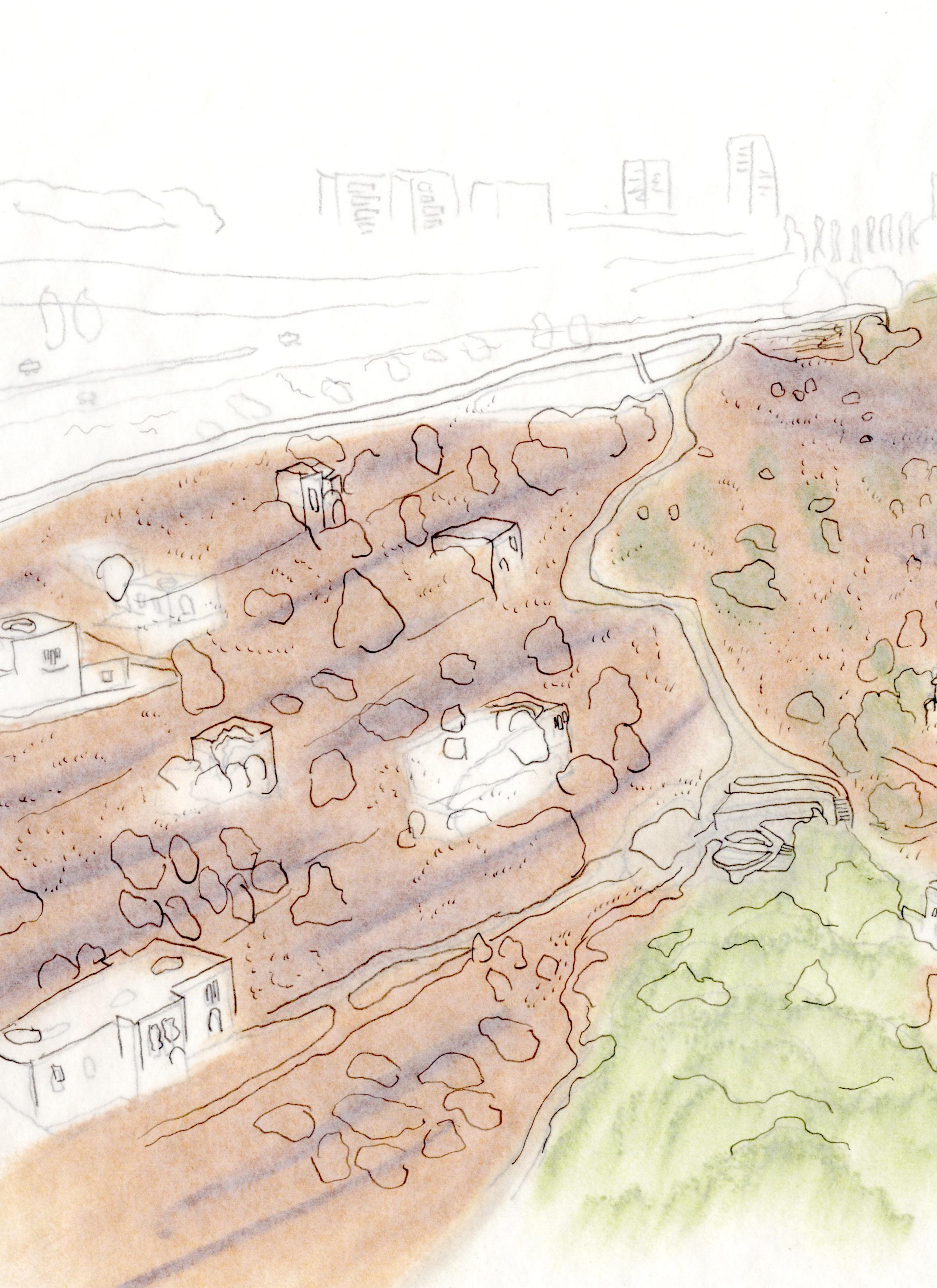
Introduction to Lifta
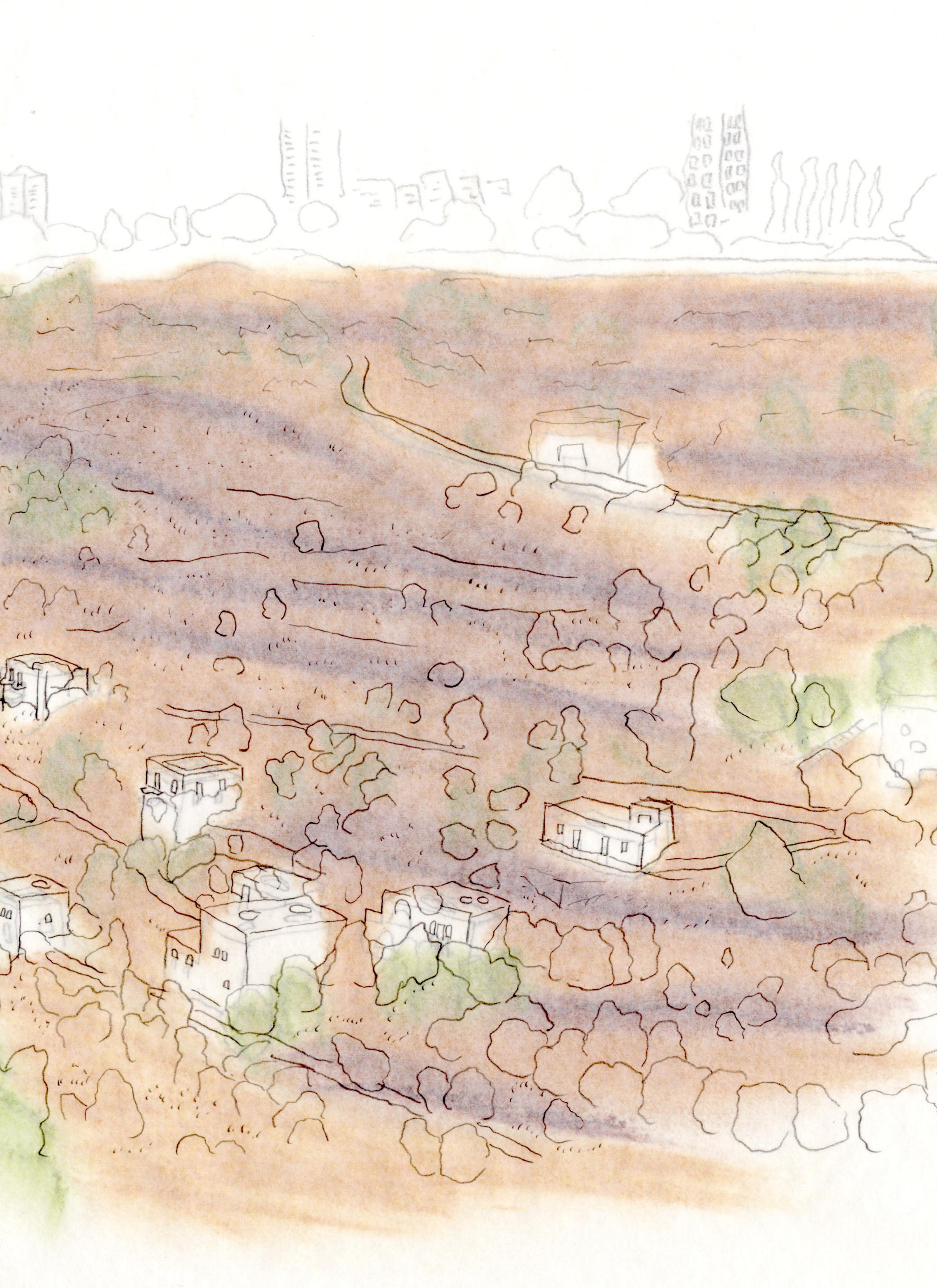
INITIAL RESEARCH
RIWAQ is an organization which involves itself with the documentation and restoration of heritage sites particularly in the rural areas of the West Bank and Gaza. Most of their restoration works aim to provide community and cultural centres for marginalized groups in these rural settings. Apart from that, RIWAQ’s work is also a means of preserving Palestinian heritage and identity. It raises awareness of collective memories through the preservation of these heritage sites.1
Most notably in the case of worker’s pride, RIWAQ’s work has allowed “job creation through restoration projects”. In the book Stone Men: The Palestinians Who Built Israel by Andrew Ross, workers stated that while they could be earning more money working in Israel, however that would make them be working for the oppressor instead. Whereas working for RIWAQ, they are working
for their people, for Palestine. In return, they also gain expertise in stonework.2
In the webinar, director of RIWAQ, Shatha Safi also introduced a Palestinian village called Lifta which stands today as the only remaning site that has not been repopulated after the 1948 ethnic cleansing3. The existing ruins act as a reminder of forced displacement of Liftawis.
Lifta is currently under threat as the Israeli government plans to develop the area into an Israeli neighbourhood with luxury villas and hotels. This resource is a key indicator of the next area of focus for my research and further exploration on Lifta shall be undertaken throughout the semseter.
1 Suad Amiry, “Our Story,” RIWAQ, n.d., https://www.riwaq.org/our-story
2 “New and Old Facts,” Verso Books, published April 2021, https://www.versobooks.com/blogs/5051-new-and-old-facts
3 “Sharing Narratives of Cultural Resistance: RIWAQ and the Preservation of Palestinian Heritage,” Naya Daur TV, published June 30, 2021, YouTube video, 1:24:0, https://www.youtube.com/watch?v=odcXyTbvgZ8&t=1558s
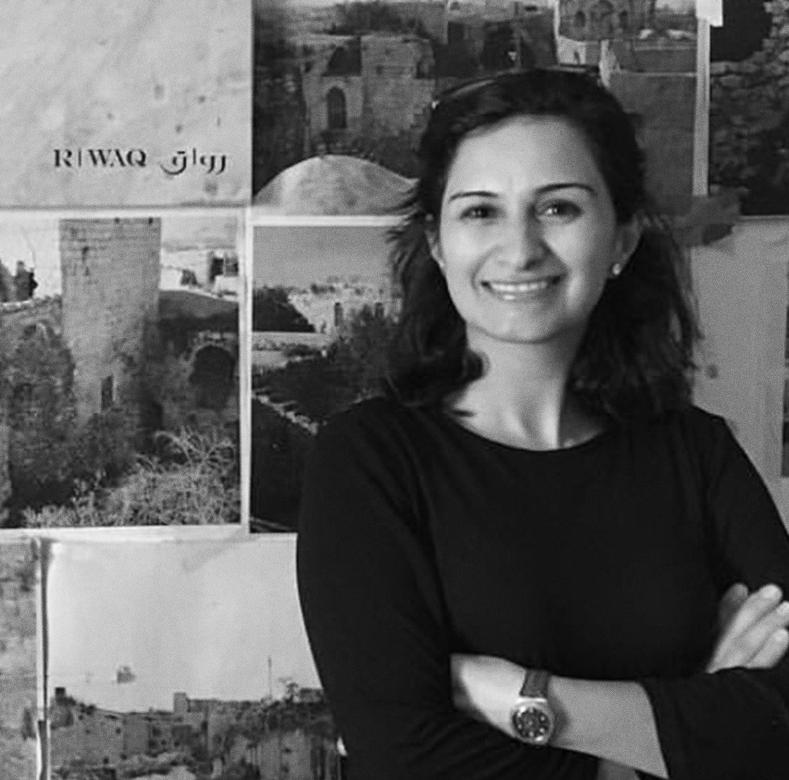
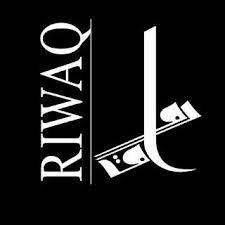
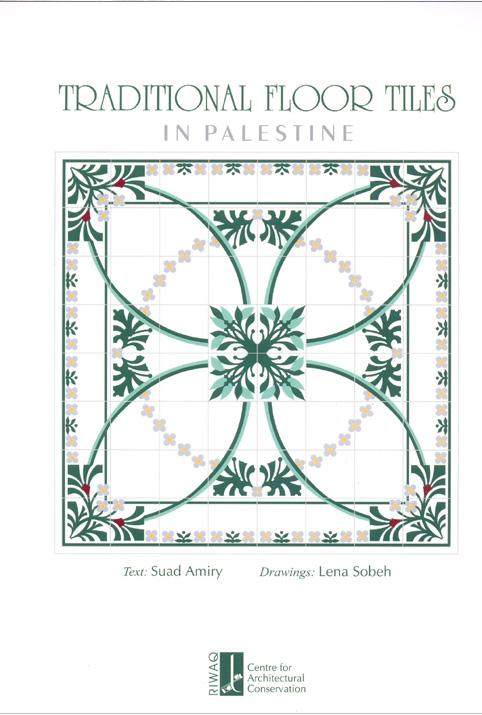
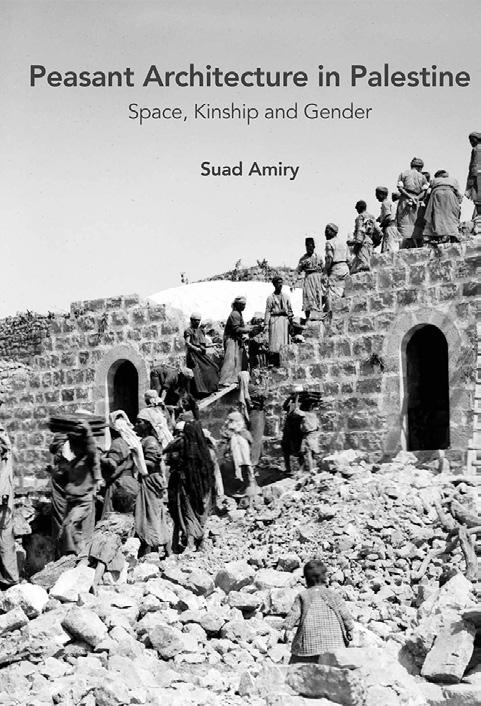
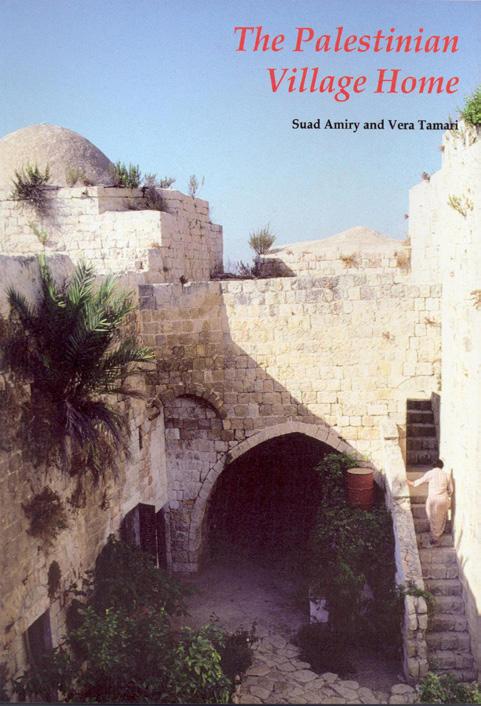
RIWAQ
“And of course, There is Lifta.”
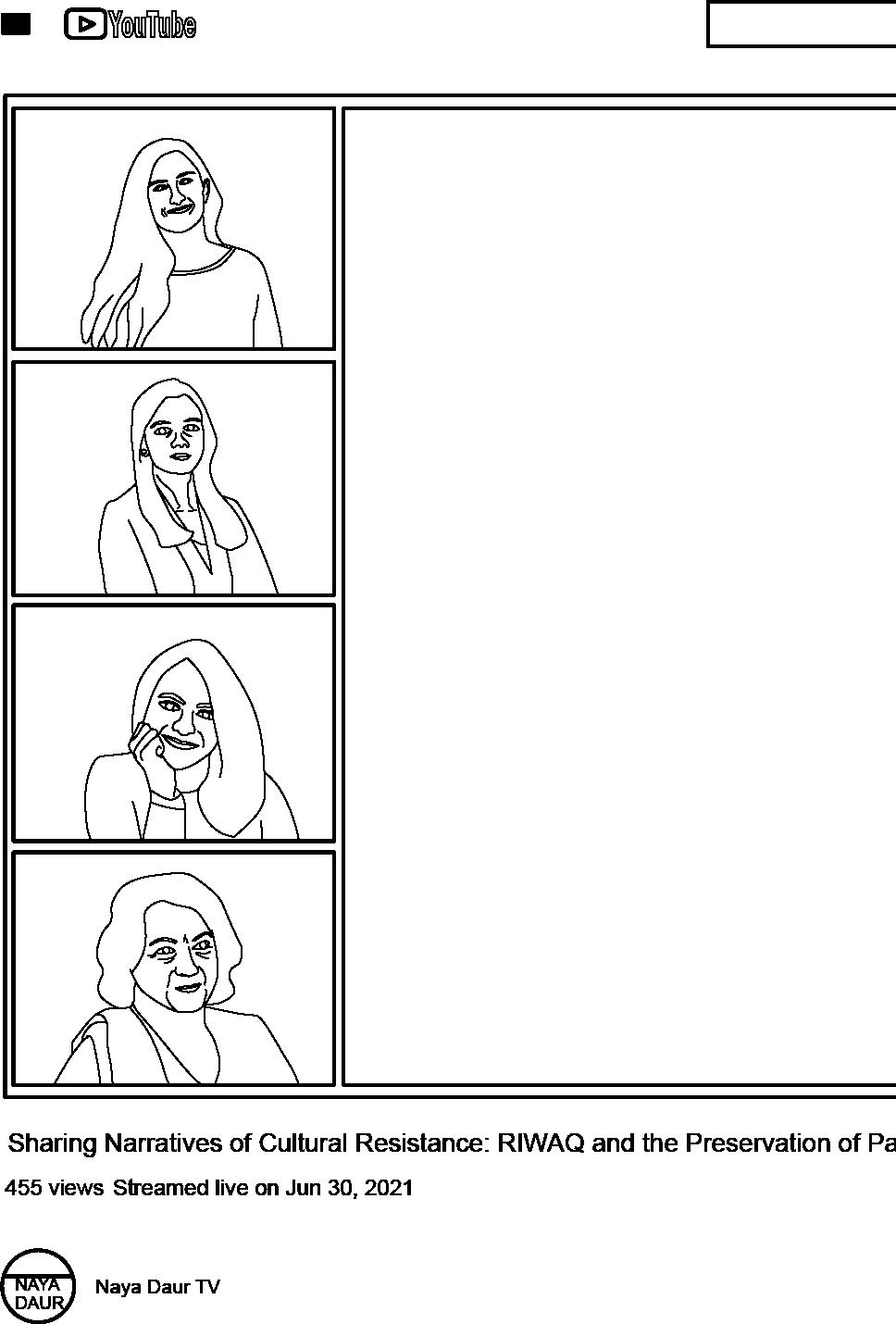
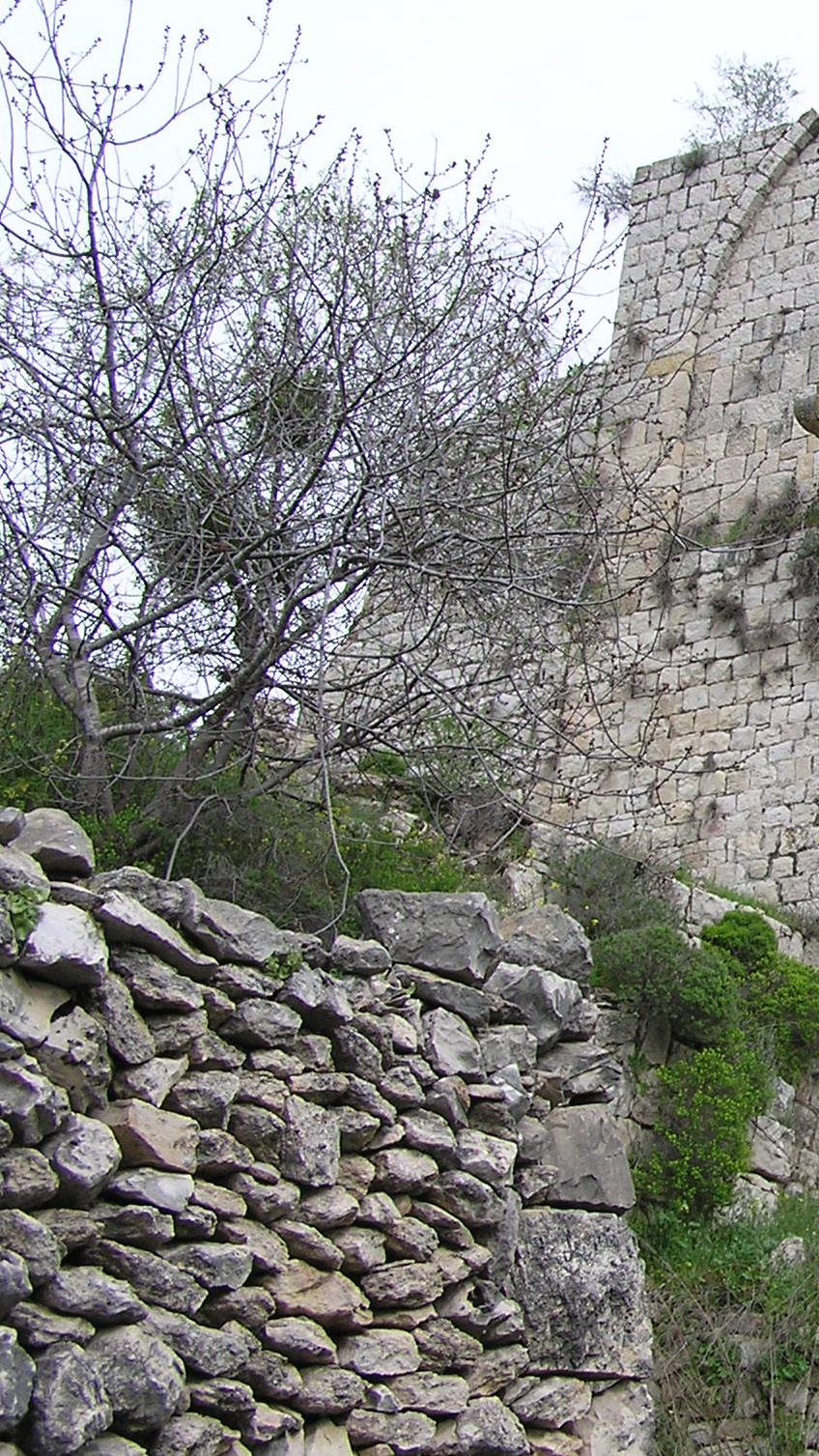




Initial Understanding of Lifta
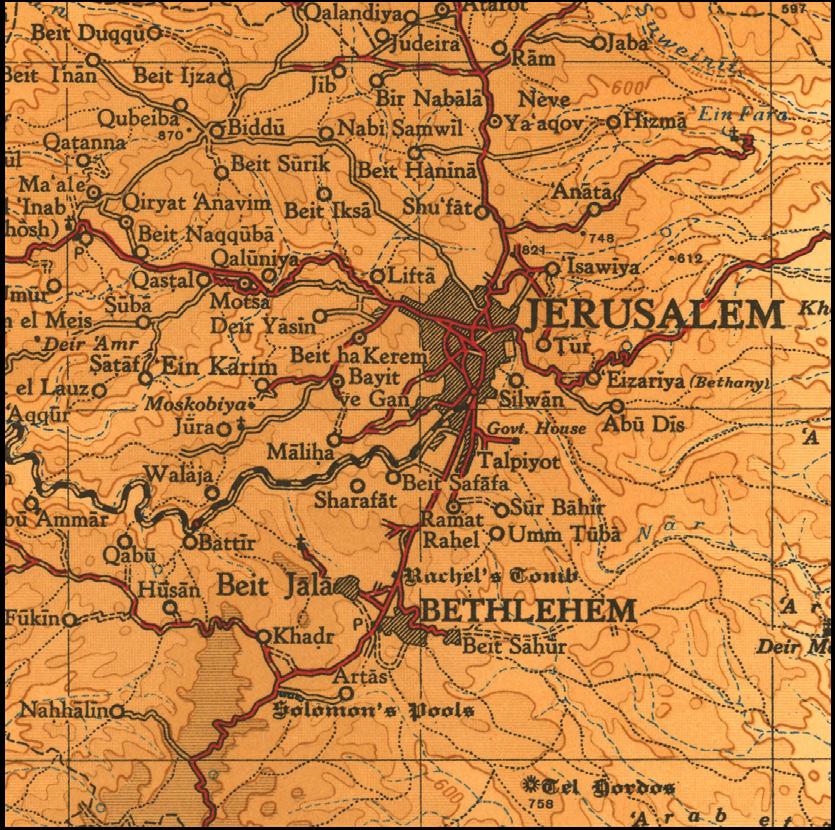
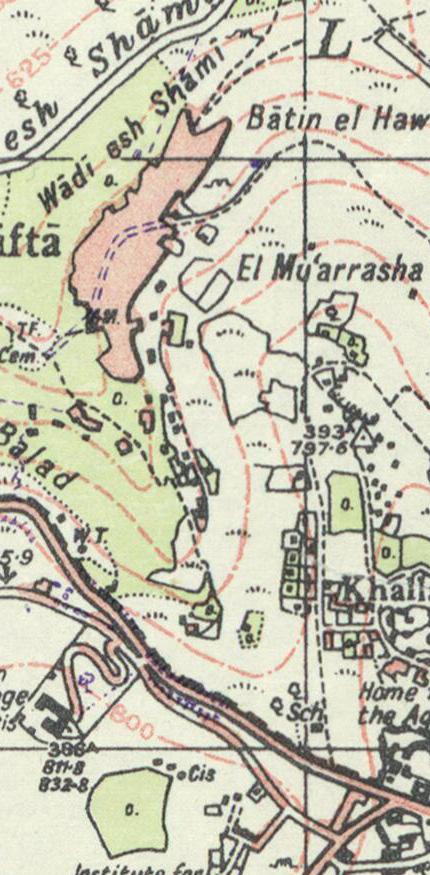
INITIAL
RESEARCH
Lifta, Jerusalem, Palestine
Currently known as Mei Neftoah by Israelis
It is labelled as a nature reserve
5 km travel distance
West Entrance into the old city of Jerusalem
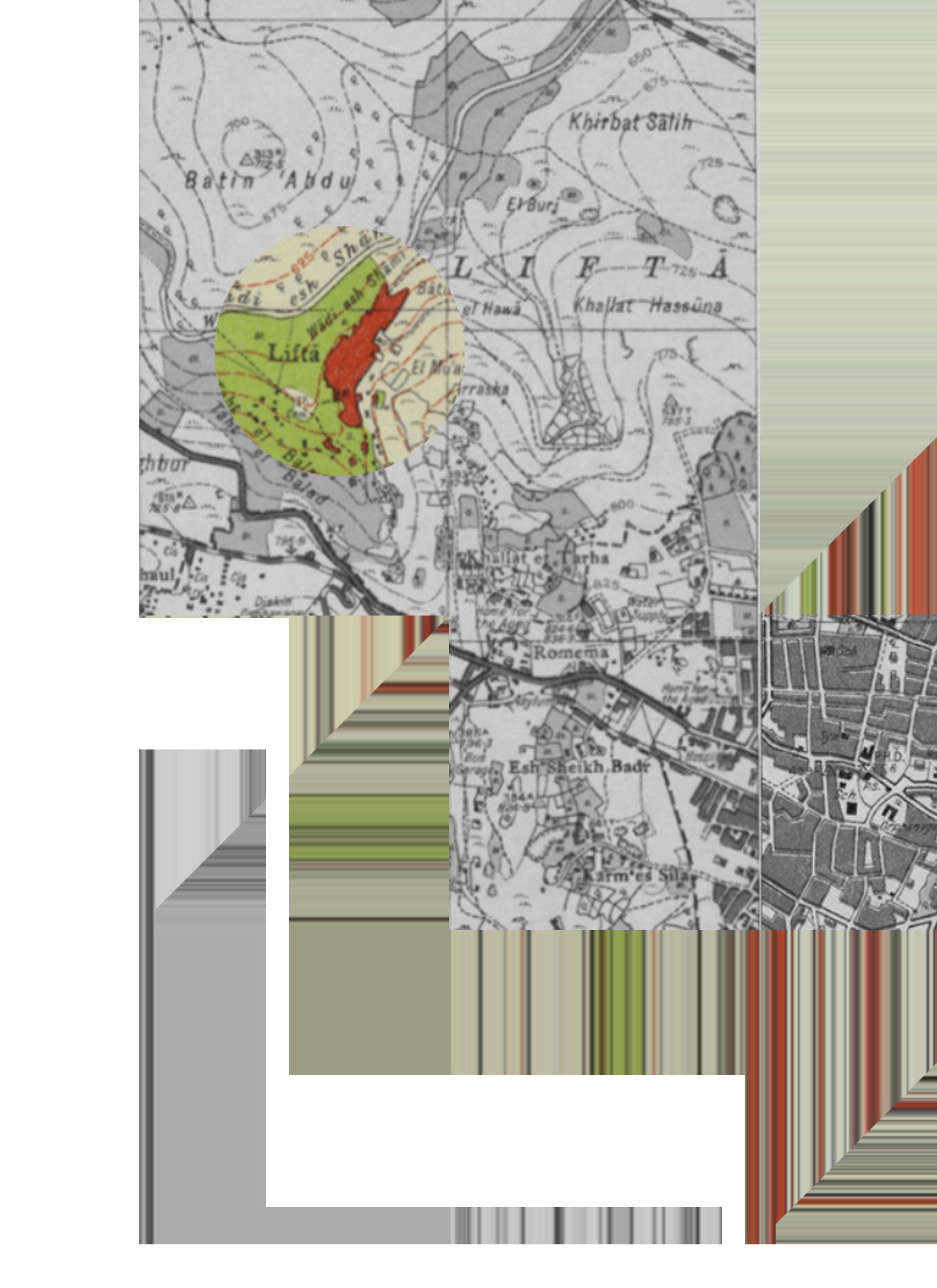 Jaffa Gate
Jaffa Gate
The heart of the village of Lifta is built on the slope of the steep hills. The construction of these buildings are built following the contours of the landscape. Seeing how Lifta was located in close proximity to the West part of the Old Jerusalem City, various crops from Lifta such as wheat, barley, olives and fruits were sold in markets within Jerusalem City.
Therefore, this prime location has been preyed upon by the Israeli Land Authority to redevelop Lifta
Location of Lifta
into a luxury Jewish neighbourhood. However, the steep slopes of Lifta make it difficult for modern day construction. Hence, construction plan 6036 proposed various retaining walls in order to make way for new construction has caused an uproar with both Palestinians and Israelis.
One of the main issues is that this redevelopment threatens the destruction of the existing landscape of Lifta which has been loved by both Palestinians and Israelis.
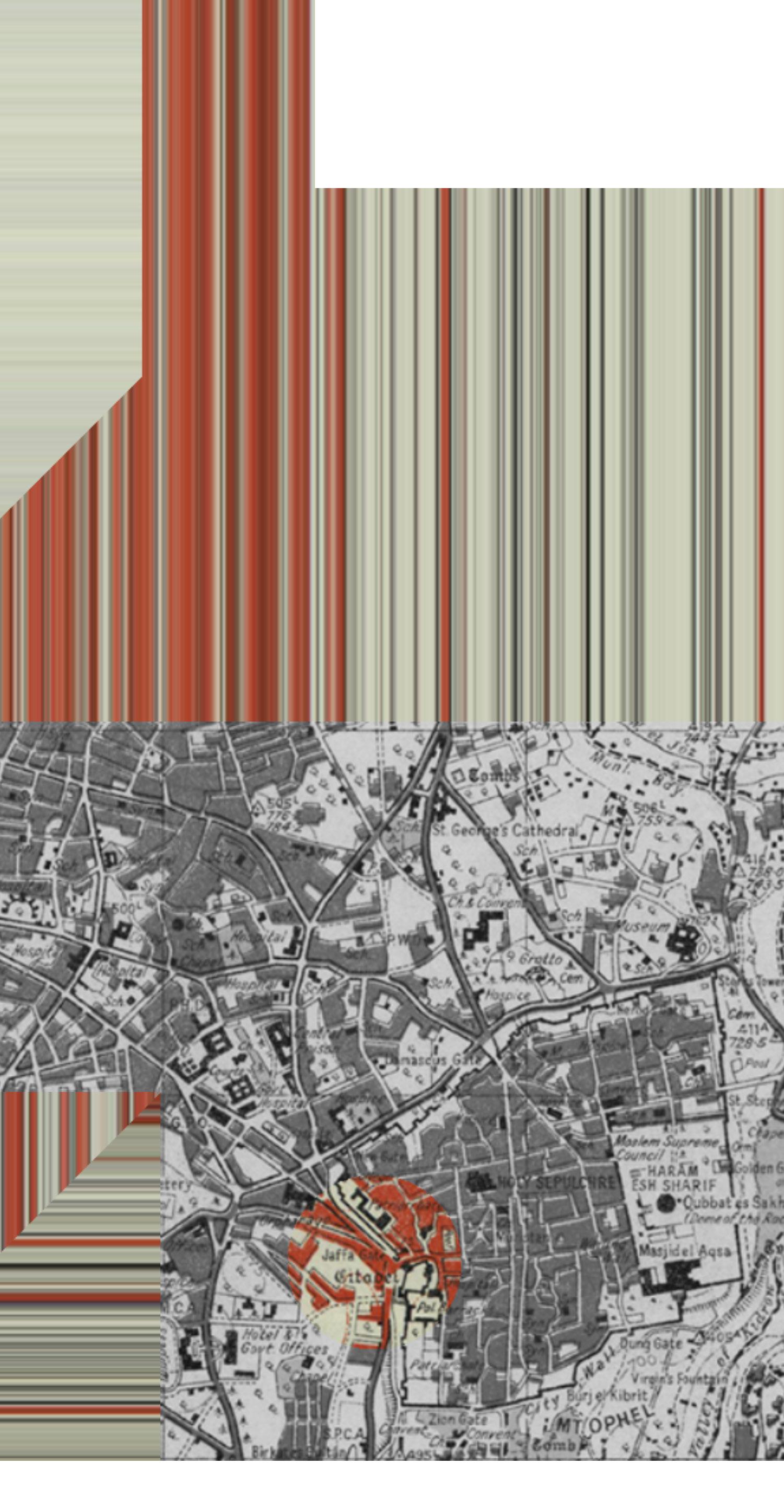
Old City of Jerusalem
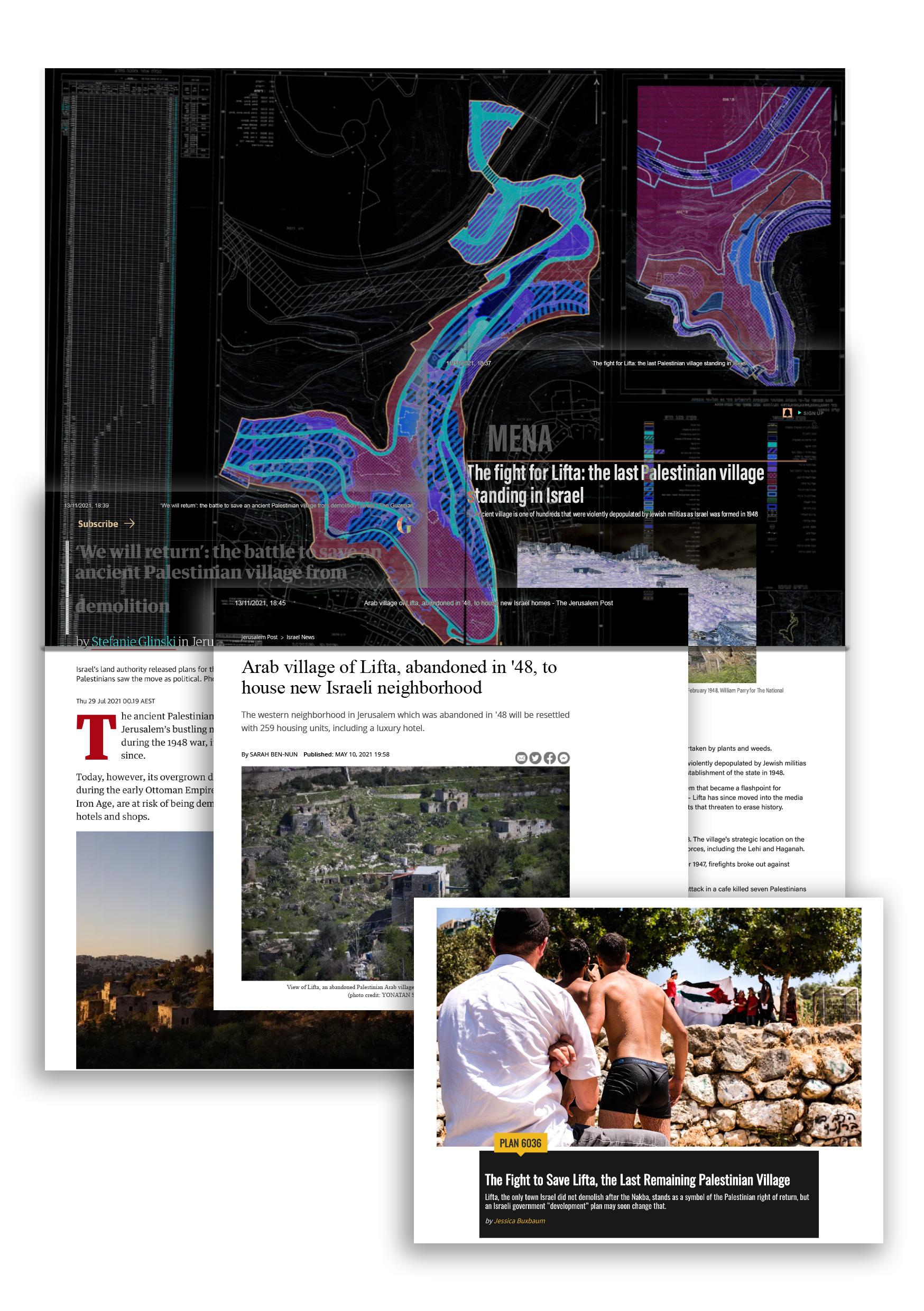
The topic of redeveloping Lifta has been an ongoing issue which started in 2006 with the issuance of construction plan 6036, issued by the Israeli Land Authority.
However, due to a heavy backlash by both Palestinians and Israelis, the case of Lifta has been taken to court where a judge has ruled that a proper survey of the site of Lifta needs to be completed before any redevelopment project can proceed.
Apart from that, the fight to save Lifta had resulted in the formation of the “Save Lifta Coalition” which is made up of both Palestinians, Israelis and the international community. The coalition also managed to register Lifta as a tentative
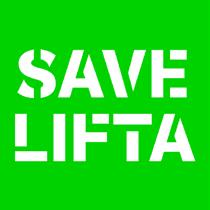

Despite the media coverage of Lifta, it is also important to note that these news articles are not conveying the whole truth regarding Lifta. For instance, some articles claim that Lifta is an abandoned village or do not mention the historical presence of Palestinians in Lifta.
This could not be further from the truth as Lifta was not abandoned but rather the village had been ethnically cleansed by Zionist Defense Force (Haganah) in 1947. Today, Lifta’s Palestinian residents are residing in Ramallah or East Jerusalem.
Pressing Matters of Lifta
UNESCO World Heritage Site in 2018.
Access to Lifta
POPULATION GROUP ACCESS TO LIFTA
JEWISH ISRAELI CITIZEN

PALESTINIAN CITIZEN OF ISRAEL
EAST JERUSALEM PALESTINIAN
WEST BANK PALESTINIAN
GAZA STRIP PALESTINIAN
PALESTINIAN EXILES
Lifta’s Present Day Significance
The table on the left shows which population group is able to visit Lifta. At the moment, not all Palestinians are able to visit Lifta. However it does not mean that the rest of Palestine is unaware about Lifta. This is because Lifta is seen as a symbol for the right of return. Currently, Lifta refugees are residing in Ramallah, East Jerusalem, Jordan, or have fled abroad.* For the Palestinians or Lifta descendants that are still able to visit Lifta, visiting Lifta is an act of exercising their right to the land where their ancerstors were born.

For instance, Lifta is visited by the displaced Liftawis on Land Day to commemorate where their ancestors were from but to also clean up their graves. Hence, Lifta’s significance still remains relevant to younger generations of Liftawis.



Lifta Volumes Pros [ + ] Cons [ - ]
Highlights a potential romanticization for the idea of return
Pros [ + ] Cons [ - ]
Highlights a potential romanticization for the idea of return

Lifta as a place of reinvention and reimagination to challenge dominant narratives
Lifta as a place of reinvention and reimagination to challenge dominant narratives
An attempt to create Palestine of the Earth and Palestine of the Mind
No mention of a possible return for Liftawi refugees
No mention of a possible return for Liftawi refugees
RIWAQ Pros [ + ] Cons [ - ]

An attempt to create Palestine of the Earth and Palestine of the Mind
Extensive knowledge on rehabilitating dilapitated historical buildings
Pros [ + ] Cons [ - ]
Extensive knowledge on rehabilitating dilapitated historical buildings
Creates a space that builds community values
No clear resolution or proposal for Lifta
No clear resolution or proposal for Lifta
Creates a space that builds community values
Advocating for a presevation and conservation of the existing building in Lifta
Advocating for a presevation and conservation of the existing building in Lifta
Current efforts do not mention of a possible return for Liftawi refugees
Current efforts do not mention of a possible return for Liftawi refugees
SAVE LIFTA COALITION Pros [ + ] Cons [ - ]
Have done extensive surveys of existing buildings of Lifta
SAVE LIFTA COALITION Pros [ + ] Cons [ - ]

Preserving Lifta under heritage reasons
The cause brings together both Palestinians and Israelis to work together and preserve Lifta
Have done extensive surveys of existing buildings of Lifta
The cause brings together both Palestinians and Israelis to work together and preserve Lifta
Current efforts do not mention of a possible return for Liftawi refugees
Preserving Lifta under heritage reasons
Current efforts do not mention of a possible return for Liftawi refugees
FOUNDATION FOR ACHIEVING SEAMLESS TERRITORY Pros [ + ] Cons [ - ]
FOUNDATION FOR ACHIEVING SEAMLESS TERRITORY Pros [ + ] Cons [ - ]

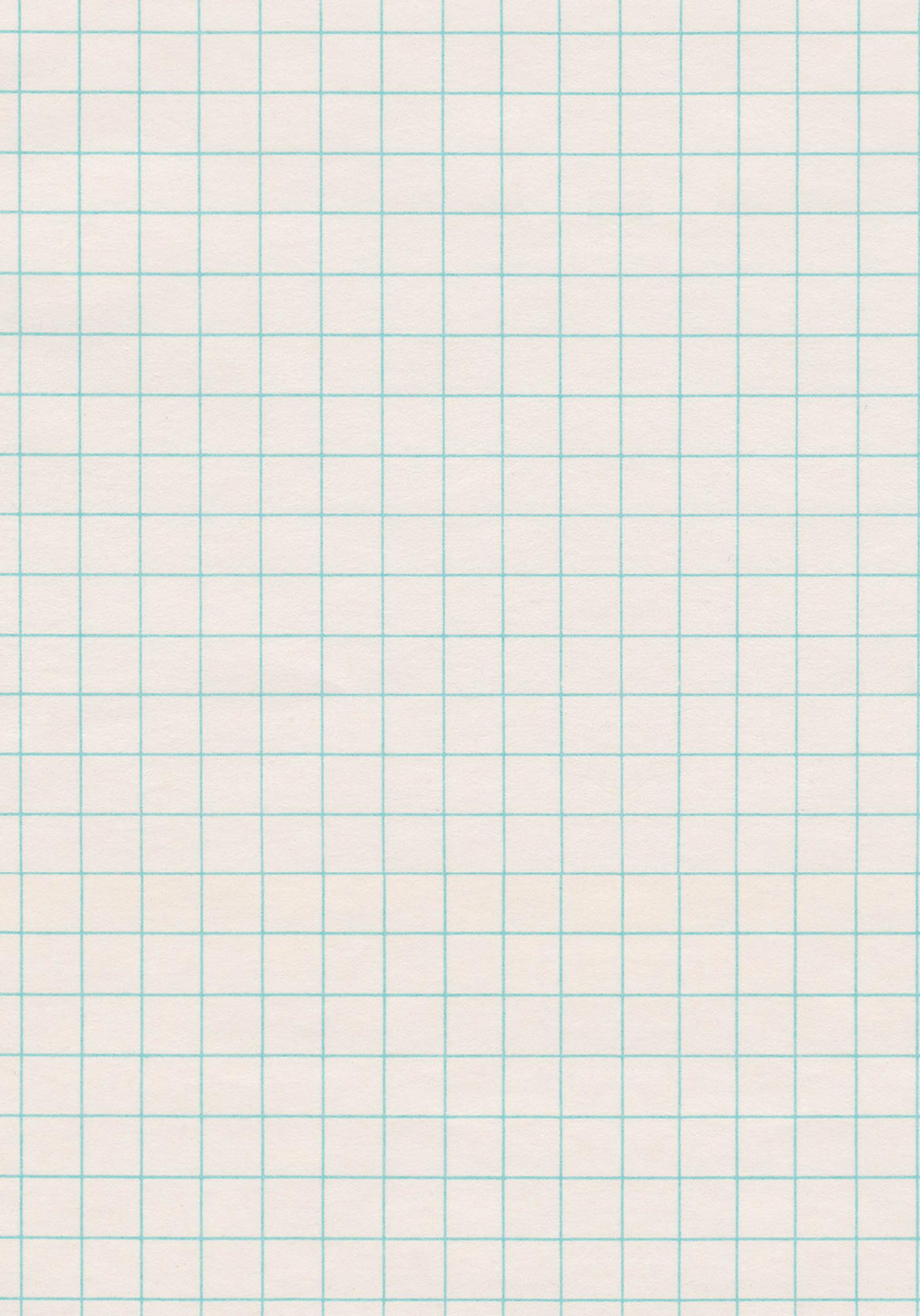
Questioning the act of labelling Lifta as heritage conservation work
Questioning the act of labelling Lifta as heritage conservation work
Highlighting that the exisiting heritage conservation initiative does not acknowledge liftawi refugees as rightful owners of the land Advocating for more exposure on the issue of LIFTA
Highlighting that the exisiting heritage conservation initiative does not acknowledge liftawi refugees as rightful owners of the land
Advocating for more exposure on the issue of LIFTA
No clear resolution or proposal for Lifta
No clear resolution or proposal for Lifta
Identifying Key Communities in Saving Lifta
ISRAELI PALESTINIAN BEREAVED FAMILIES FOR PEACE

Pros [ + ] Cons [ - ]

Successfully managed to cultivate good relationships between Palestinian and Israeli civilians through dialogue
Trying to highlight the issue to students in Israeli High Schools and provide students a new perspective through
Can arrange and host dialogues anywhere physically or online Palestinian right to return is acknowledged
Not involved in construction sector
At the entrance to Jerusalem lies Lifta, a beautiful untouched reserve. It is a meeting place for diverse visitors, and a living testimony to the development of local agriculture, design and ways of life.
Lifta, a cultural reserve
Lifta’s unique beauty combined wildlife with the historical remains of the Arab village including the remains of its traditional agricultural industry.
The Lifta Spring, once the centre of the village continues to connect various communities to this day.
It’s no wonder that Lifta is being nominated for recognition as a World Heritage Site. Lifta is a green space, open to all. And it reflects the bonds between community, nature and heritage.
Lifta also serves as an accessible green lung for 125,000 residents in surrounding neighbourhoods.
But these days, our Lifta is in danger. An exclusive, upper class only neighbourhood is set to be built here.
Plans include a modern road system with huge retaining walls. It would destroy the cultural landscape of Lifta.
The Israel Antiquities Authority found that the proposed plan would harm this remarkable site and damage the Lifta Springs.
So what can we do?

We offer an alternative plan.
1. Promote Lifta’s Conservation Plan

2. Rebrand Lifta as a popular spot for local leisure activities
3. A tourist attaction that is located on the historical road to Jerusalem
4. Declare Lifta as an urban nature reserve
There is another way. Help us protect our beautiful village. Together we will save Lifta!
The Save Lifta Coalition consists of both Palestinian and Israeli volunteers. It was established to protect the village of Lifta from demolition. Construction plan 6036 by the Israeli Land Authority threatens to endanger the state of these historic ruins.
Currently, the coalition advocates for Lifta to be preserved as a heritage site and has been successful in submitting petitions which put construction plan 6036 on hold. Lifta has now been added into UNESCO’s tentative list of world heritage sites. The coalition sees the method of rebranding Lifta as a heritage reserve will be able to ensure its sustained existence.1
The promotional video does not publicly acknowledge the diaspora of Liftawi residents or their right of return. Daphna Golan-Agnon who is a sociology professor and on the coalition’s board explains that it is an issue that cannot be discussed now. For now, the main goal is to keep Lifta as it is and one day there can be more talks regarding the right of return.
This narrative has not been able to clarify on the right of return
for Palestinians and Liftawis. Not to mention, it begs the question of who’s heritage are they trying to protect?
The coalition also sees Lifta as a valuable tourist attraction which once again, seems to ultimately reflect a boost in Israeli tourism.
Recently, a boutique hotel in Lifta has also started operating. The owner of this boutique hotel is called Yoni Yochanan. He is a Mizrahi Jew and an Israeli citizen born in Lifta and claims that he understands the pain of losing one’s home in Lifta. Hence why he is a part of the Save Lifta Coaltion as well.
However, the fact that he decided to renovate one of the homes in Lifta into a hotel for commercial purposes does not seem to reflect any form of solidarity with the Palestinians.
Hence, the goal for saving Lifta for this coalition does not seem to be a unified one.
1 “About Us,” Save Lifta Org, n.d., http://savelifta.org/he/about/
Save Lifta Coalition
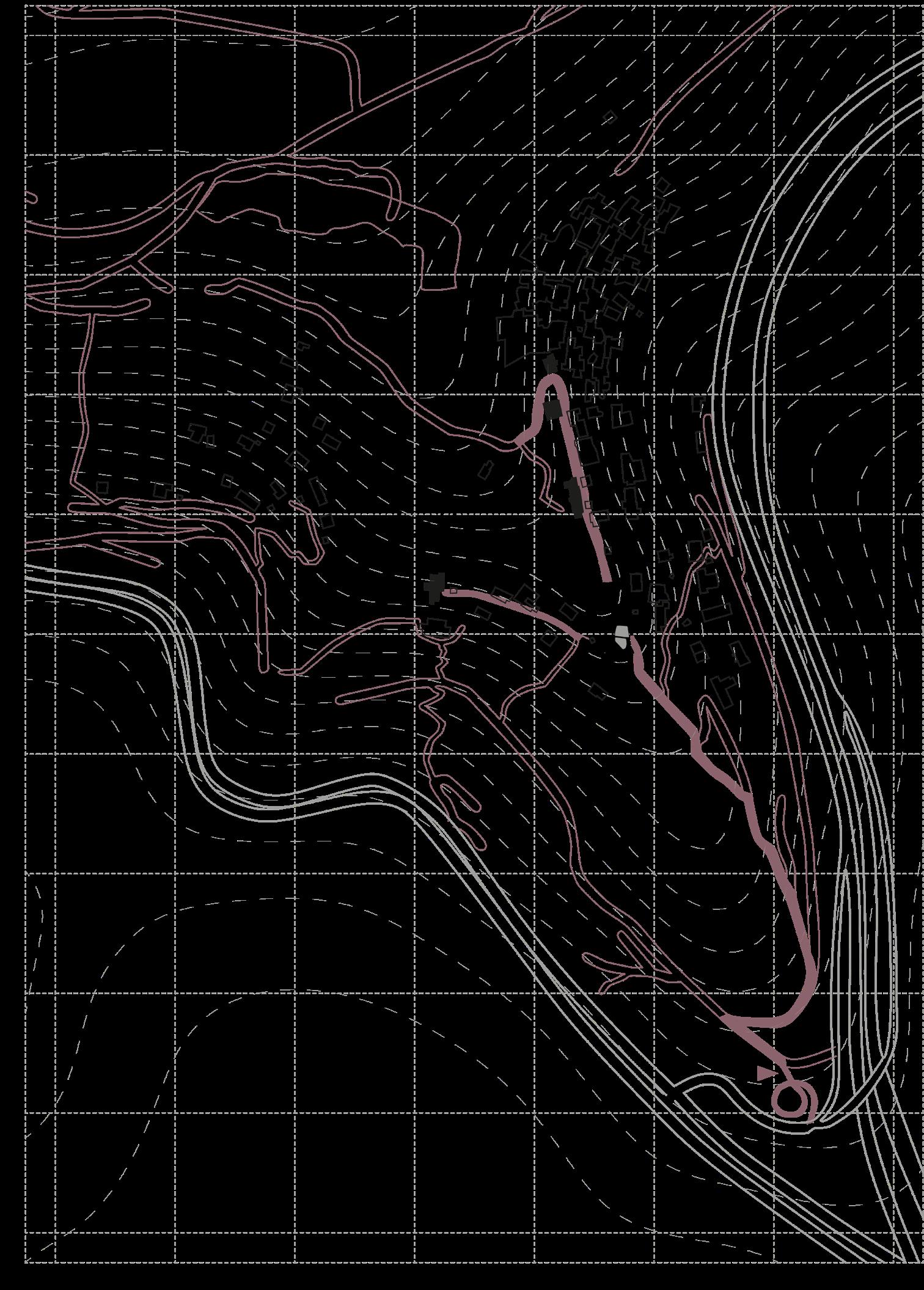

Zochrot is an Israeli NGO who’s core mission is to advocate for the acknowledgement and accountability of the Israeli Jewish society regarding the ongoing injustice of the Nakba*. In order to do so, the organization uses walking tours in Lifta as a means to challenge Israeli Jewish preconceptions in regards to their highly skewed political and cultural beliefs.
Umar al-Ghubari is the main group facilitator for the walking tours in Lifta. During these tours, participants are taken around a few key sites in
Lifta where Umar explains the history behind these homes, the facts about why Liftawis had to flee, and also by using these remaining houses, is able to point out the planned expulsion of Lifta’s residents by Israeli militia.
Most importantly, this organization aligns its key focus to address the right of return for Palestinians as well as a call to end the ongoing colonization by Israel.
Zochrot
1. Umar explains that this main path was a key road for Lifta’s residents and how they all still remember how they had to run for their lives on this road when they were being attacked.

2. The building behind Umar previously belonged to a wealthy Palestinian family. However, when Lifta was resettled with Jewish immigrants, it was turned into a school for Jewish children.




Zochrot
5. Image of Lifta refugee, Yacoub Odeh.
3. Umar standing in front of the remnants of the old mosque of Lifta.
4. Umar standing inside an olive mill, pointing and the punctured roofs of Lifta’s buildings, explaining how the expulsion of Liftawis was a planned and deliberate effort by Israeli militia.
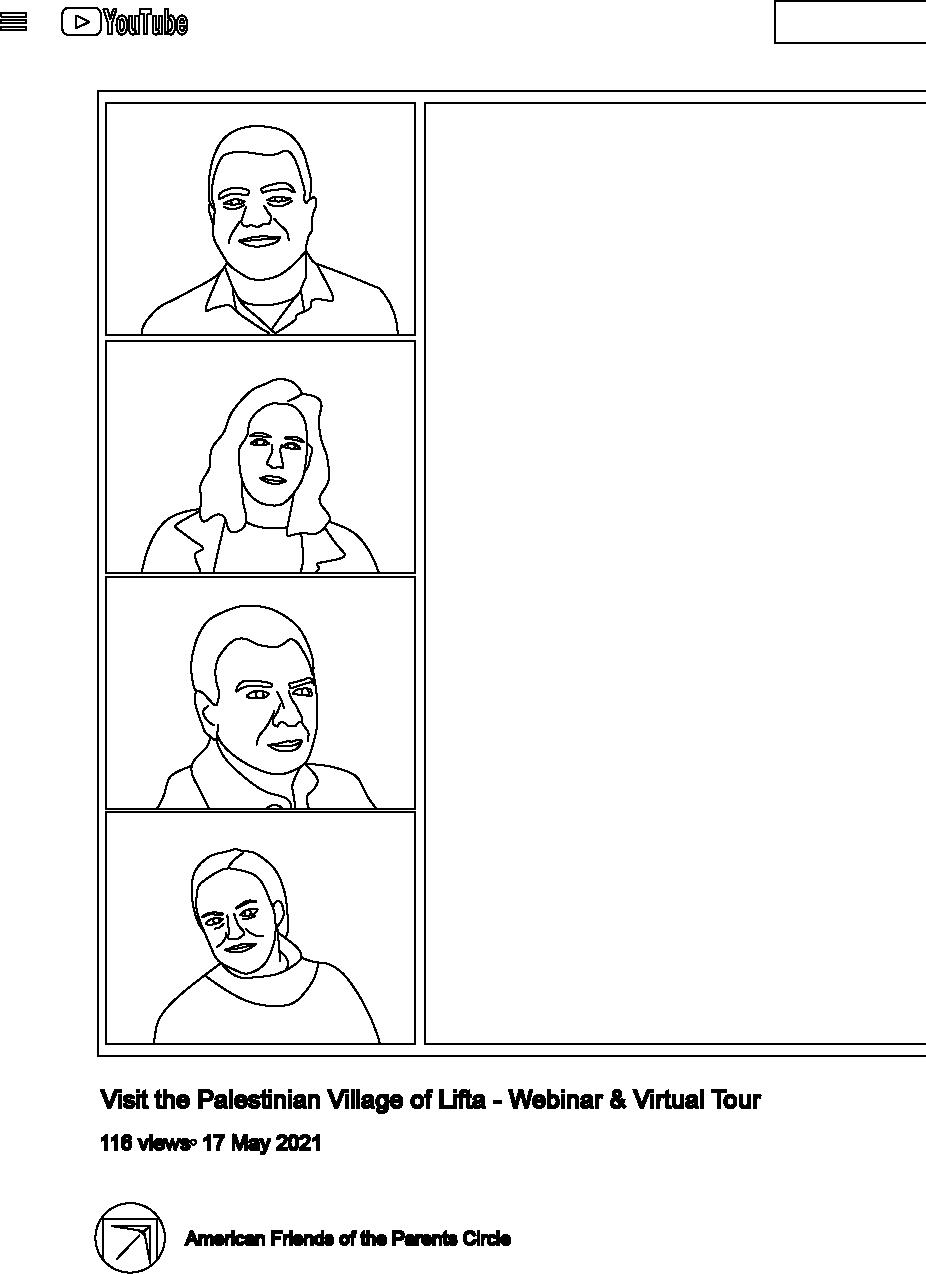
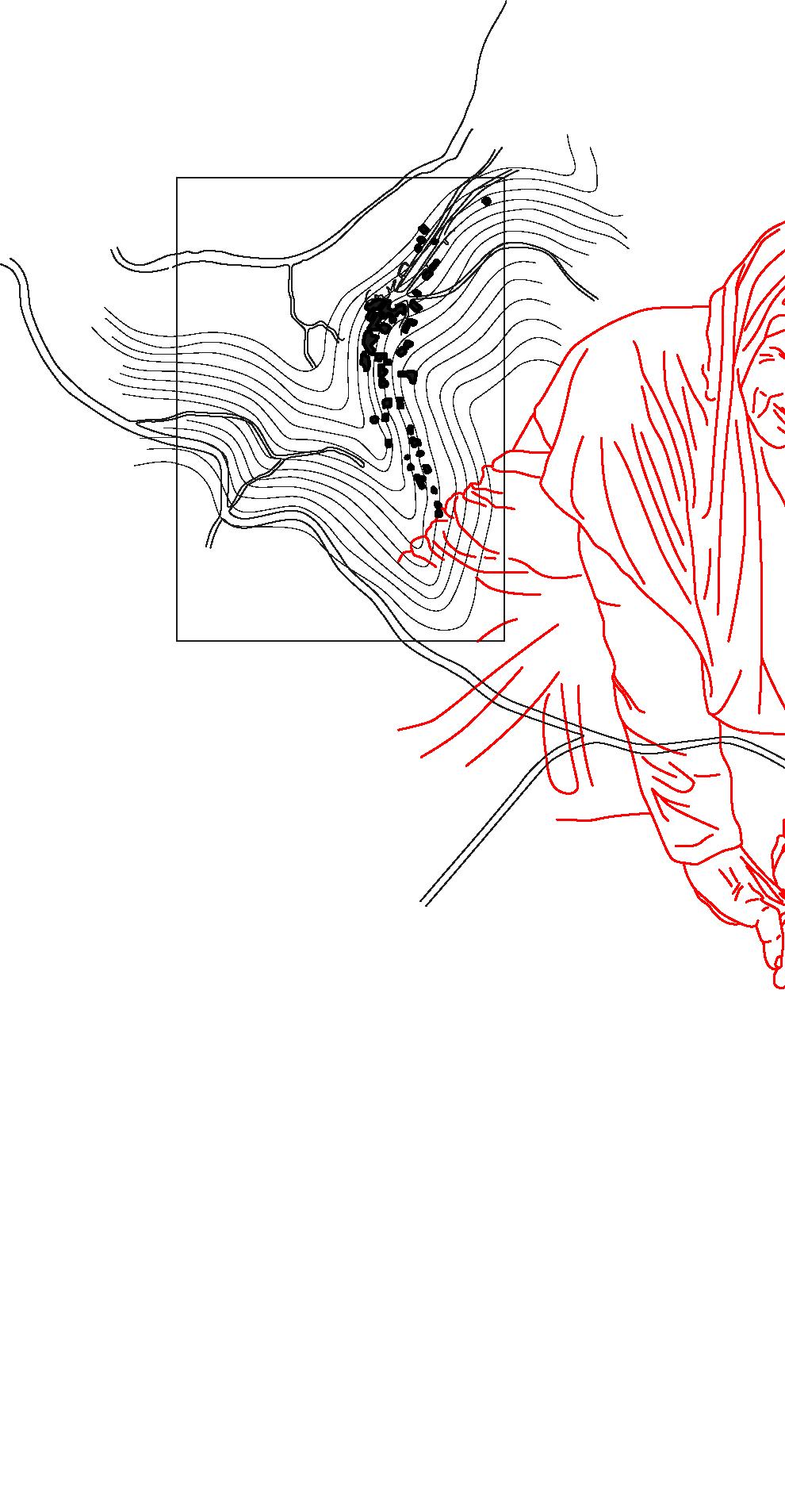

LIFTA
“Oh look! It’s Louf growing on our motherland. How wonderful!!
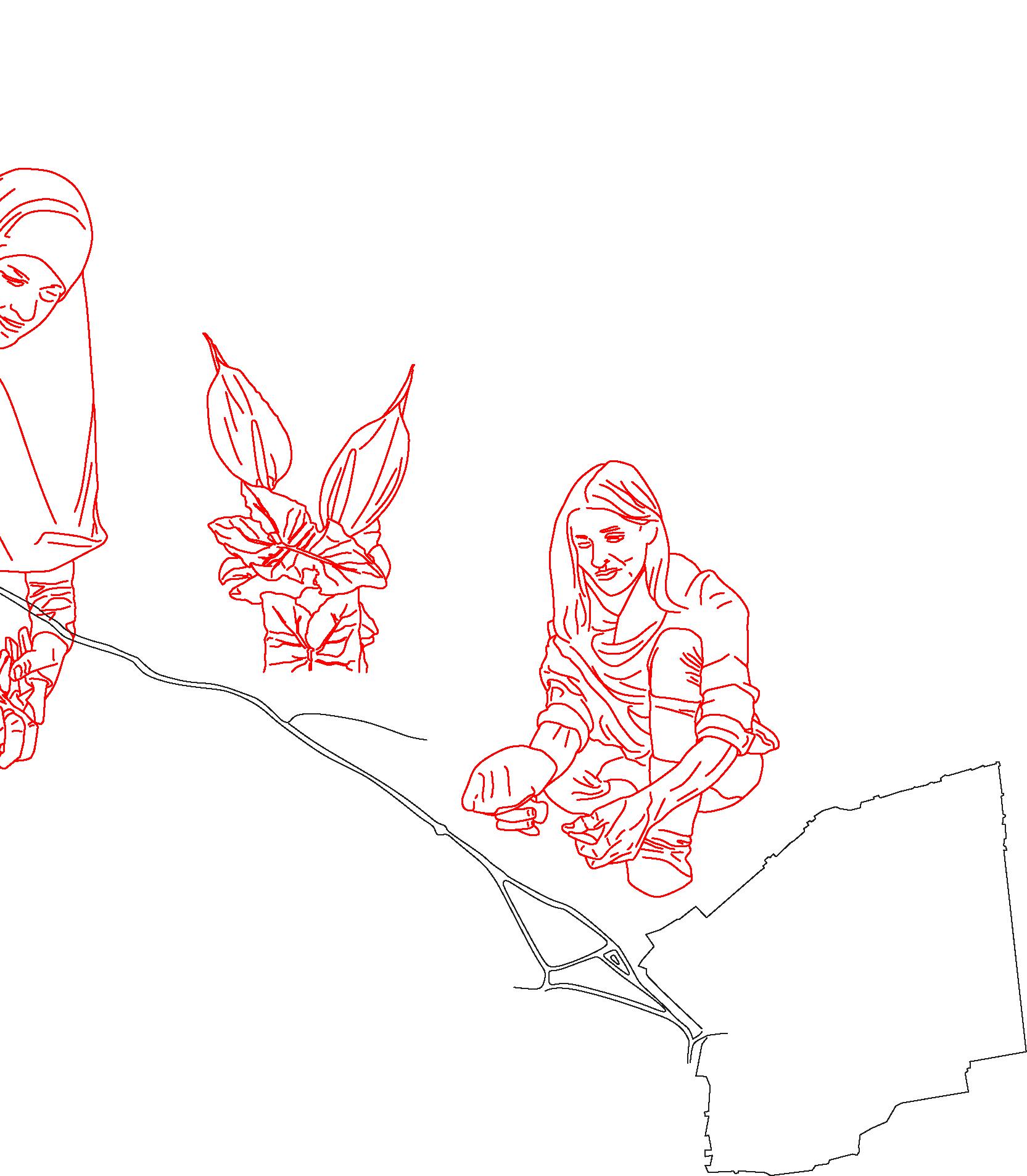
I better pick some to plant back home to a make stew.”
“My friend told me that we can eat this raw.”
[ a few moments later...]

“Oh no!!! My mouth feels numb!! What is happening??”
Arum Palaestinum
Black Calla Lily
OLD CITY OF JERUSALEM
Process for Cooking Loof




Israeli Palestinian Bereaved Families for Peace
For this organization, the significance of Lifta goes beyond its cultural landscape or heritage. Lifta is used as a key site where the group hosts walking tours of Lifta under the Parallel Narratives program.
This program takes both Palestinians and Israelis through a guided tour of Lifta and helps to facilitate in peaceful dialogue between both sides. It is a complex and complicated journey, full of pain and challenges. The graduates of the program, Palestinians and Israelis, end the program with a new understanding of the conflict
and the other side, with a belief in the possibility of reconciliation, and with a desire to maintain contact with each other and work together to promote change in the difficult reality of conflict. 1
While this group does not propose any architectural intervention. However, its impacts seem to be more sustainable in the long term efforts towards resolving conflict from both sides. At the end of this program, both sides are able to develop mutual empathy and respect.
https://www.theparentscircle.org/pcff-activities_heb/narrative-pne_heb-2/
1 “The Narrative Project,” The Parents Circle, n.d.,
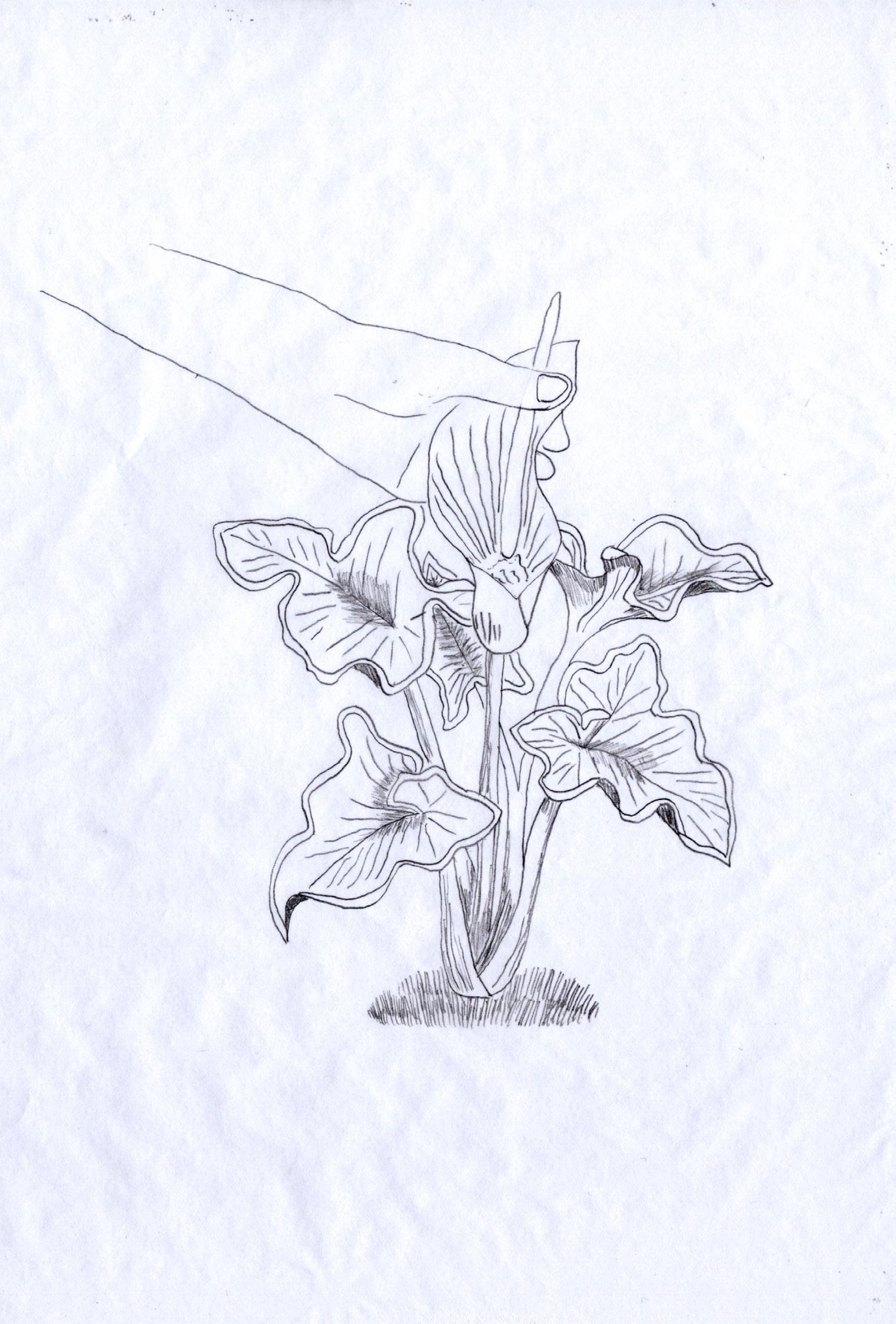
At this stage of research for this thesis, the main takeaway was how through Lifta, one is able to witness how Israeli civilians are able to question and confront their own dominant perspectives which have been skewed by the Israeli government.
In the webinar hosted by Israeli Palestinian Bereaved Families for Peace, an incident had happened to one of the Israeli participants.
She was misinformed by one of her Israeli friends that she can eat the plant Arum Palaestinum in its raw form. However, shortly after that, she had experienced a poisonous reaction which caused her mouth to become numb.
While she was waiting for help to arrive, she noticed that the Palestinian participants were foraging excitedly for Arum but were not consuming it in raw form.
After the incident, she started to interact more with the Palestinian participants and they had taught her the proper way to cook this plant to remove its toxins.
It was at this moment that this lady admitted in the webinar that this was when she knew that the land in which they were on, truly belonged to the Palestinians.
Hence, it might seem a daunting task to challenge the Israeli government who has been having an upper hand in this Israeli Palestinian conflict.
However, it is in this small moments that occur in Lifta whish is able to influence the thoughts of everyday people without the need for violence.
Hence, the symbolism behind Lifta and the plant Arum Palaestinum is truly an important one in the fight for Palestine.
Significance of Walking Tour in Lifta
100mm 50mm 25mm 0















 Jaffa Gate
Jaffa Gate




































